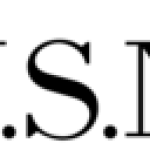- Industria: Government
- Number of terms: 11131
- Number of blossaries: 0
- Company Profile:
A sample made for the purpose of determining the presence of removable radioactive contamination on a surface. It is done by wiping, with slight pressure, a piece of soft filter paper over a representative type of surface area. It is also known as a "swipe" or "smear" sample.
Industry:Energy
地中電磁放射 (光子) は可視光より短い波長を有するします。これらの光線は通常特定の原子核の周りの電子分野の励起によって生成されます。原子核反応で x 線と核の光子を参照するが通例です。
Industry:Energy
患者の病気を治療するために電離放射線の治療上の使用。ほとんどの放射線療法のプロシージャの癌性ティッシュを殺すか、腫瘍のサイズを小さくものは、治療用量が痛みを軽減または良性の条件を扱うに使用もこと。たとえば、intervascular 小線源治療は放射線詰まった血管を治療するために使用します。ガンマ定位放射線治療 (ガンマナイフ) teletherapy、甲状腺の機能亢進を修正するためのヨード治療などを他の一般的な放射線治療の手順です。これらのプロシージャは放射源、NRC は、その契約の状態は、内側または外側のボディに適用することによって規制を使用します。どちらの場合で、放射線治療の目標は放射線高精度と周囲の健康な組織を維持しながら、時間の必要な長さのための必要な治療や痛みの緩和の線量を提供します。
Industry:Energy
The solid form of mixed uranium oxide, which is produced from uranium ore in the uranium recovery (milling) process. The material is a mixture of uranium oxides, which can vary in proportion and color from yellow to orange to dark green (blackish) depending on the temperature at which the material is dried (which affects the level of hydration and impurities), with higher drying temperatures producing a darker and less soluble material. (The yellowcake produced by most modern mills is actually brown or black, rather than yellow, but the name comes from the color and texture of the concentrates produced by early milling operations. ) Yellowcake is commonly referred to as U<sub>3</sub>O<sub>8</sub>, because that chemical compound comprises approximately 85 percent of the yellowcake produced by uranium recovery facilities, and that product is then transported to a uranium conversion facility, where it is transformed into uranium hexafluoride (UF<sub>6</sub>), in preparation for fabricating fuel for nuclear reactors.
Industry:Energy
Classification of low-level radioactive waste (LLW) according to its radiological hazard. The classes include Class A, B, and C, with Class A being the least hazardous and accounting for 96 percent of LLW. As the waste class and hazard increase, the regulations established by the NRC require progressively greater controls to protect the health and safety of the public and the environment. For the specific regulations, see Title 10, Section 61. 55, of the Code of Federal Regulations (10 CFR 61. 55), "Waste Classification. ”
Industry:Energy
Classification of low-level radioactive waste (LLW) according to its radiological hazard. The classes include Class A, B, and C, with Class A being the least hazardous and accounting for 96 percent of LLW. As the waste class and hazard increase, the regulations established by the NRC require progressively greater controls to protect the health and safety of the public and the environment. For the specific regulations, see Title 10, Section 61. 55, of the Code of Federal Regulations (10 CFR 61. 55), "Waste Classification. ”
Industry:Energy
瞬間反応リアクターを亜臨界はまたはクラスター アセンブリ (シャット ダウンおよび制御) すべてフルレングスのロッドと仮定すると現在の状態から亜臨界になる量は、単一クラスター ロッドアセンブリ完全に撤回されると想定される最も高い反応性の価値があるを除いて完全に挿入されます。
Industry:Energy
